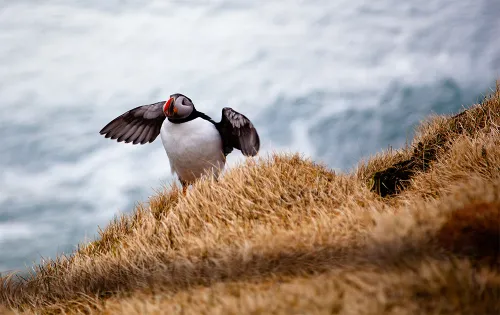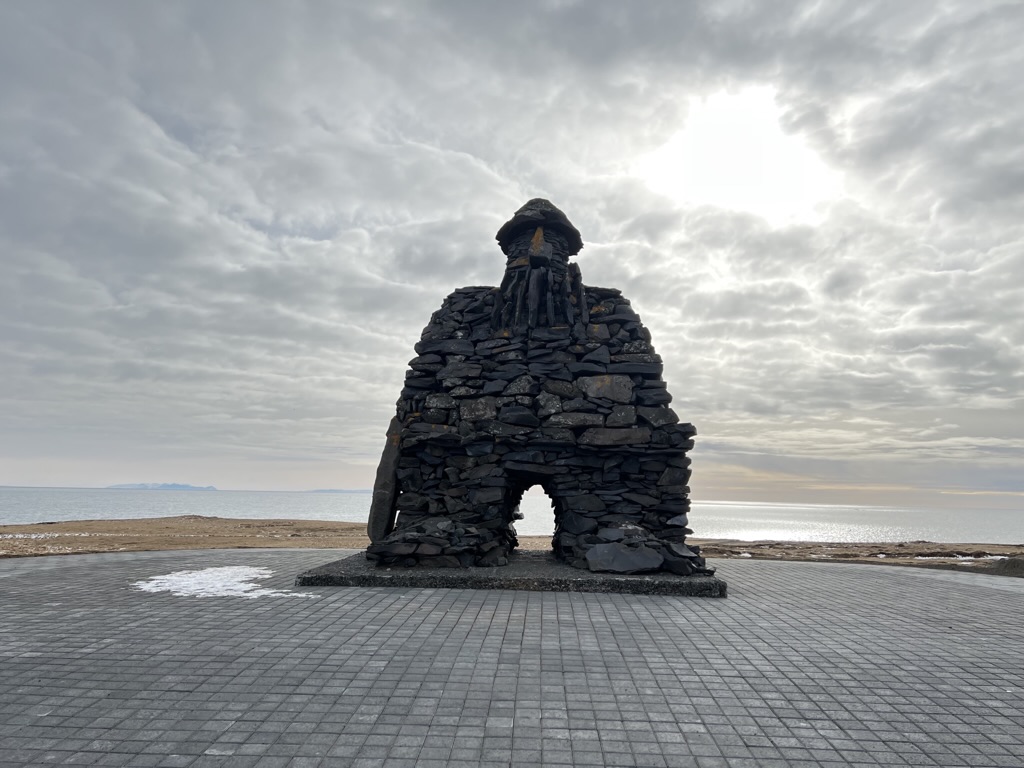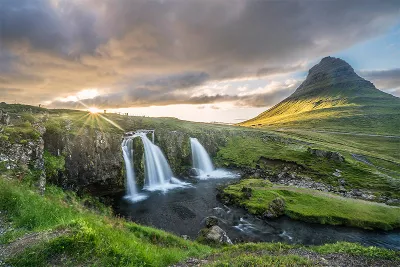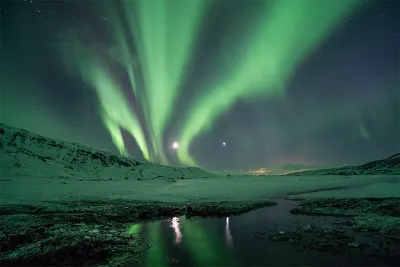Iceland truly stands out as an awe-inspiring country, boasting magnificent landscapes and captivating wildlife that present a haven for photography enthusiasts. Here, I’ve compiled a collection of valuable insights and recommendations to aid aspiring photographers in capturing the allure of Iceland.
Selecting the Ideal Equipment
When it comes to photographing in Iceland, a few crucial factors regarding equipment warrant consideration. Firstly, the camera itself. While any camera can be utilized for photography in Iceland, opting for a DSLR or mirrorless camera with interchangeable lenses is highly recommended. This choice affords greater flexibility in selecting the most suitable lens for each shot.
Next, a reliable and high-quality tripod is essential. Given Iceland’s propensity for windy conditions, a tripod will serve as an invaluable aid in maintaining the stability of your camera. For maximum adaptability, it is advisable to employ a tripod equipped with a ball head.
Lastly, assembling a stellar set of lenses is paramount. A wide-angle lens becomes indispensable for capturing the expansive landscapes that Iceland is renowned for. Additionally, a telephoto lens proves valuable in capturing wildlife and distant subjects, ensuring no captivating moment goes uncaptured.
Mastering Composition
Composition plays a pivotal role in capturing exceptional photographs. For landscape photography, it is imperative to craft a composition with a strong foreground, middle ground, and background. This arrangement instills depth and dimension into your photos.
Additionally, adhering to the rule of thirds bears great importance. By dividing your frame into thirds, both vertically and horizontally, you effortlessly fashion a well-balanced composition that naturally draws the viewer’s eye toward the focal point of the photo.
Furthermore, leveraging leading lines within your photographs yields remarkable results. Leading lines, such as roads, rivers, or fences, guide the viewer’s gaze precisely toward the photo’s focal point, further enhancing its impact.
Navigating Diverse Lighting Conditions
Iceland’s fickle weather lends itself to ever-changing lighting conditions. Here are a few recommendations to help you effectively capture photos in varying light:
Golden Hour: Seize the moments just after sunrise and before sunset, commonly referred to as the golden hour. During this time, the light exudes a soft, warm quality, rendering it ideal for landscape photography. The magical hues of the sky can be beautifully encapsulated during this fleeting period. This golden hour happens almost 24/7 from mid May to mid July due to the sun never fully setting or rising.
Blue Hour: The blue hour encapsulates the time preceding sunrise and following sunset. This ethereal phase bathes the surroundings in a captivating blue light, fostering a moody and evocative atmosphere. Cityscapes and nightscapes, in particular, thrive during this time, exhibiting their allure with enchanting allure.
Overcast Days: Don’t discount overcast days as a photographic opportunity. In fact, the even and diffused lighting conditions they offer can truly accentuate the colors and nuances of Iceland’s landscapes, culminating in captivating compositions.
Rainy Days: Despite initial reservations, rainy days present unique opportunities to capture moody and atmospheric photos. Embrace the somber ambiance and explore the interplay between water droplets and the surrounding environment, unearthing hidden gems along the way. Iceland is a very rainy country so it’s wise to use this to your advantage.
Photographing in Iceland during winter can be tricky since it can get really dark during the winter months and the sun doesn’t fully rise. It’s a great time to get pictures of the northern lights, frozen waterfalls, and glaciers.
Make sure you are dressed in layers, have a waterproof cover for your camera equipment, and monitor the weather forecast. You can also monitor the aurora borealis forecast if you plan on catching the magnificent show that they are.
Masterful Post-Processing
Post-processing serves as an indispensable component of digital photography. Consider these tips to enhance your photos during the post-processing stage:
Embrace Color Profiles: Iceland boasts a distinctive color profile, rendering it worthwhile to harness a suitable color profile during post-processing. This approach aids in faithfully capturing the true essence of the landscape’s colors.
Leverage a Polarizing Filter: To diminish glare and augment color saturation, integrating a polarizing filter into your workflow can prove highly beneficial. This tool empowers you to achieve vibrant and captivating results.
Harness Lightroom or Photoshop: Embracing the power of industry-standard software such as Lightroom or Photoshop opens up a world of possibilities for refining your photos. Adjusting exposure, color, and contrast becomes a seamless experience.
Safety whilst photographing
Ensuring safety while capturing your photographic endeavors in Iceland is paramount. Alongside these valuable photography tips, it is crucial to prioritize your well-being. Here are some essential safety considerations to keep in mind during your photography excursions.
When seeking the perfect shot, it is imperative to exercise caution on the roads. Travelers have been observed stopping on the side of Road 1 to snap photos. However, it is crucial to restrict such stops to designated areas specifically created for safe parking and photography. These designated stopping areas are strategically positioned alongside the road, providing a secure space for capturing memorable moments.
Avoid the temptation to stand on the road itself while taking photos. Although the roads may seem empty, it is important to recognize that cars can swiftly emerge, particularly modern vehicles that operate quietly. Tragically, individuals have lost their lives while photographing on the road, underscoring the significance of this cautionary advice.
When photographing at Reynisfjara, exercise great care and maintain a safe distance from the ocean. This captivating beach holds hidden dangers in the form of deceptive waves, known as “sneaky waves,” capable of swiftly pulling unsuspecting individuals out to sea.

Similarly, it is advisable to refrain from venturing too close to cliff edges, exemplified by Látrabjarg in the Westfjords. This remarkable cliff offers breathtaking views and hosts a multitude of bird species. However, it is crucial to exercise caution near the cliff edges, as they can crumble unexpectedly, posing a significant risk to those standing too close.
Iceland, on the whole, is a remarkably safe country. By maintaining awareness of your surroundings and prioritizing personal safety, you can confidently immerse yourself in the wonders of photography without compromising your well-being. Remember, it is essential to strike a balance between your passion for photography and your own safety.



